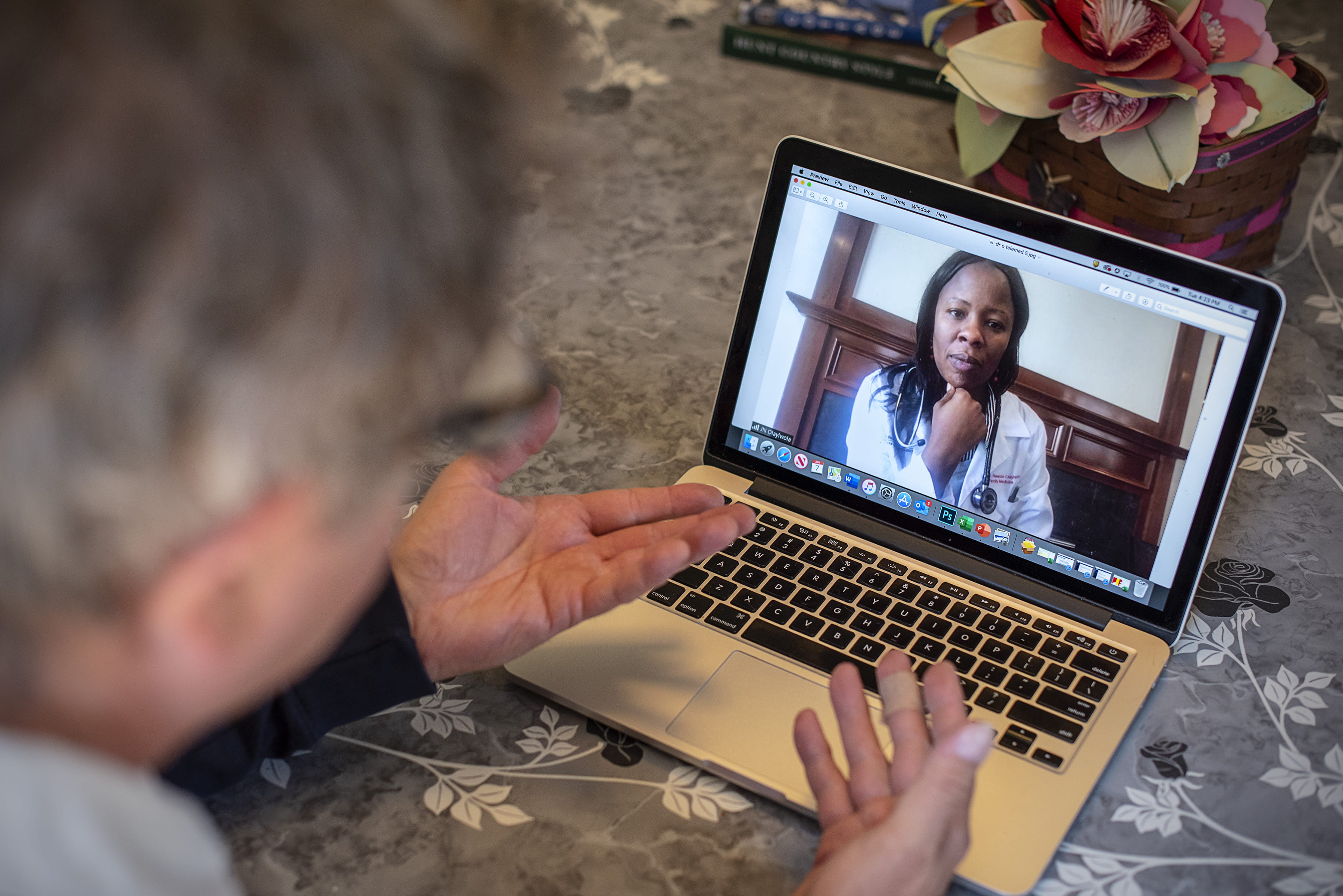April 8, 2020
 “Telehealth care allows our providers to offer high-quality clinical care while ensuring the safety of our providers, staff, patients and visitors,” said Dr. L. Arick Forrest, medical director of Ambulatory Services at The Ohio State University Wexner Medical Center and vice dean of Clinical Affairs and president of The Ohio State University Physicians, Inc. “Our doctors are working with patients to determine whether their current health concerns or follow-up visits are suitable for a telehealth visit.”
“Telehealth care allows our providers to offer high-quality clinical care while ensuring the safety of our providers, staff, patients and visitors,” said Dr. L. Arick Forrest, medical director of Ambulatory Services at The Ohio State University Wexner Medical Center and vice dean of Clinical Affairs and president of The Ohio State University Physicians, Inc. “Our doctors are working with patients to determine whether their current health concerns or follow-up visits are suitable for a telehealth visit.”
To care for patients remotely, Ohio State Wexner Medical Center deployed more than 200 cameras, updated more than 500 computers and set up over 2,000 accounts in Updox, a HIPAA-compliant telehealth platform. The James set up more than 40 telehealth stations in private exam rooms and offices within the hospital to ensure patient confidentiality during consults. All providers are equipped to provide these private consultations from a location outside of their usual clinic.
“We want to make sure only the patients who truly must be seen in person come to our clinical buildings,” said Dr. David Cohn, chief medical officer for The James. “Our patients with cancer are already at a risk for infection as a result of their cancer or cancer treatment, so we are being especially vigilant about putting protections in place to maintain their health and wellness.”
Ohio State Wexner Medical Center offers the following same day and by appointment telehealth visits:
- Video Visits: via the Ohio State MyHealth app, Updox or another web-based video messaging platform.
- E-Visits: patients complete a detailed questionnaire about their medical history and current symptoms. The provider reviews the responses and will either determine a care plan or recommend a follow-up appointment.
- Telephone Visits: providers and patients discuss medical concerns via phone.
A MyChart account is not required to have a telehealth appointment with an Ohio State provider.
Telehealth is offered by all specialties but not for all appointment types as each patient’s needs are different. Telehealth Express Care visits are appropriate for non-urgent health issues such as colds, flu, back pain, diarrhea, headache, heartburn, sinus problems and urinary tract infections. Providers can diagnosis conditions, electronically prescribe medication, if deemed necessary, and may recommend patients go to the nearest Ohio State Emergency Department, Urgent Care or AfterHours location for further care and treatment. Patients must be physically located in the state of Ohio.
“Over the past decade, the field of telehealth has been growing to meet the needs of patients and to improve access to care, and we need it now more than ever,” said Dr. J. Nwando Olayiwola, chair of the Department of Family and Community Medicine and professor of Family Medicine at The Ohio State University College of Medicine. “Many people are comfortable using technology to connect with family and friends. We hope that this transition in health care will be seamless for them.”
To prepare for a virtual visit, patients should be able to describe their symptoms in detail, ask questions and share photos or use online tools to provide clinical information such as blood pressure, weight and heart rate. A strong internet connection, good lighting and a clear connection are recommended.
Medicare, Medicaid and most insurance plans cover one or more telehealth service.
###
Media contact: Serena Smith, Wexner Medical Center Public Affairs and Media Relations, 614-293-3737, Serena.Smith@osumc.edu
